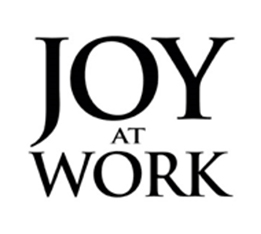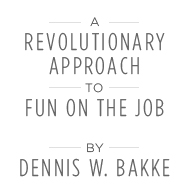SUMMARY
Dennis W. Bakke’s passion is to make work exciting, rewarding, stimulating, and enjoyable. While most business books focus on top executives, Joy at Work is aimed primarily at the working life of the other 90 to 95 percent of people in large organizations. According to Bakke, co-founder and CEO emeritus of the AES Corporation, a worldwide energy company with 40,000 employees and $8.6 billion in revenue by 2002, a better measure of an organization’s success than the bottom line is the quality of work life.
In Bakke’s view, successful business people should be guided by principles and purposes meant to be ends in and of themselves, not techniques to create value for shareholders or to reach financial goals. He is disturbed that society’s preoccupation with economics often leads people to calculate their worth as individuals based on their salaries or wealth and to judge their leaders more on financial results than on values.
Bakke views winning, especially winning financially, as, at best, a second-order goal. Yet, most business books do not go beyond this objective and thus fail to define the ultimate purpose of an enterprise. Bakke challenges us to broaden our definition of organizational performance and success beyond dollar value. The timeless values and principles he advocated during his tenure at AES, he says, stand on their own merits, whatever a company’s share price. Bakke and AES partner Roger Sant redefined the basic operating structure for organizations and created an unconventional global success story. At AES, said senior executive Tom Tribone, “We try it out in practice and then see if it works in theory.”
CHAPTER 1: MY INTRODUCTION TO WORK
After earning his M.B.A. at Harvard Business School, Bakke worked six years for the federal government in Washington, D.C. He had grown up enjoying work on his family farm in Washington State, but now he saw how central staff operations tend to exert ad estructive tyranny over organizations. He knew that purpose makes work meaningful and believed that fun and work weren’t at all incompatible. So, when he and business strategist Roger Sant brainstormed forming a private-sector company to generate electricity, the two already had a different kind of organization in mind. “Let’s make it fun,” Sant said. The two launched AES in January 1982, with a $60,000 personal bank loan and $1 million from investors, including family members.
As one of the new company’s first steps, therefore, AES held a two-day retreat where 20 employees hammered out its “shared values” integrity, social responsibility, fairness, and fun. All AES personnel were encouraged to develop a collegial, values-driven atmosphere at work and to live these values off the job, too. AES leaders stressed these values from the start to let people know where the company stood and to give prospective employees the choice of whether they wanted to be a part of AES or not.
“Fun” was the most difficult value to define. To Bakke, fun was not the Friday afternoon beer blast or the annual holiday party. Rather, fun meant a joy-filled, rewarding, creative work environment, free of autocratic supervisors and staff offices, where each and every employee could fully utilize his or her talents for success.
Bakke believes that values are the organizational infrastructure that guides management and gives a company its distinctive character. An organization?s values cannot change with the ups and downs of the stock price or be regarded as some management tool or system that runs parallel to the operation. Yet, CEOs rarely talk about values in investor meetings and rarely consider them in judging the performance of managers or employees, or in making business investment decisions. When, in 1991, AES management, employees, and investors decided to take the company public, they submitted a draft public-offering document to the Securities and Exchange Commission for review. SEC staffers advised moving the paragraph on “Adherence to AES’s Values” out of the “Business of the Company” section and into the “Special Risk Factors” section. Bakke was amused that SEC officials thought AES’s values posed a business hazard and that the U.S. Government thought it was very risky to try to operate a business with integrity, fairness, social responsibility, and a sense of fun.
CHAPTER 2: A MISERABLE WORKPLACE
Today’s management structures and attitudes toward workers are rooted in the Industrial Revolution. As capitalists created factories and hired laborers, they defined two classes of people: management and labor. Workers moved from independence and generally high self-esteem in the agrarian model to dependence and low self-regard in the factory model. In the contemporary business world, managers can get education, take responsibility, oversee budgets, and make decisions. But workers are considered lazy and irresponsible; capable only of work for hourly wages; in need of constant training and supervision; and not to be trusted to make sound decisions.
In today’s economic formula (labor + material + capital = production), people (labor) are treated as a quantity like financial and fuel resources, to buy and sell, depreciate, and, when used up, dump. Business leaders are far more concerned with the tasks these interchangeable, expendable “human resources” can perform than with who they are as humans.
Current approaches to leadership are often hierarchical and paternalistic, with decision making, compensation, and control all centralized. But decentralizing makes more sense, since lower-ranking people are most often closer to the problems and better positioned to come up with solutions, especially if they seek advice from a broad range of colleagues. In the AES experience, staff technicians were more engaged and reacted more quickly to problems when no bosses were looking over their shoulders. They felt they played an important role in their company, knowing that the company trusted their judgment. Yet making such changes ignites resistance. Executives are loath to delegate much of their power and control to others in the organization and to share their knowledge and expertise with all who work in the organization.
We need to design organizations that encourage people to look beyond job security. Most executives have no idea how to create such an environment because they may never have experienced a joyful workplace themselves. But the love of work and accomplishment, the passion to serve, and the readiness to honor individual traits, gifts, and failings still exist in the human spirit. These qualities transcend industrialism and must be welcomed where we spend most of our waking hours, the workplace.



